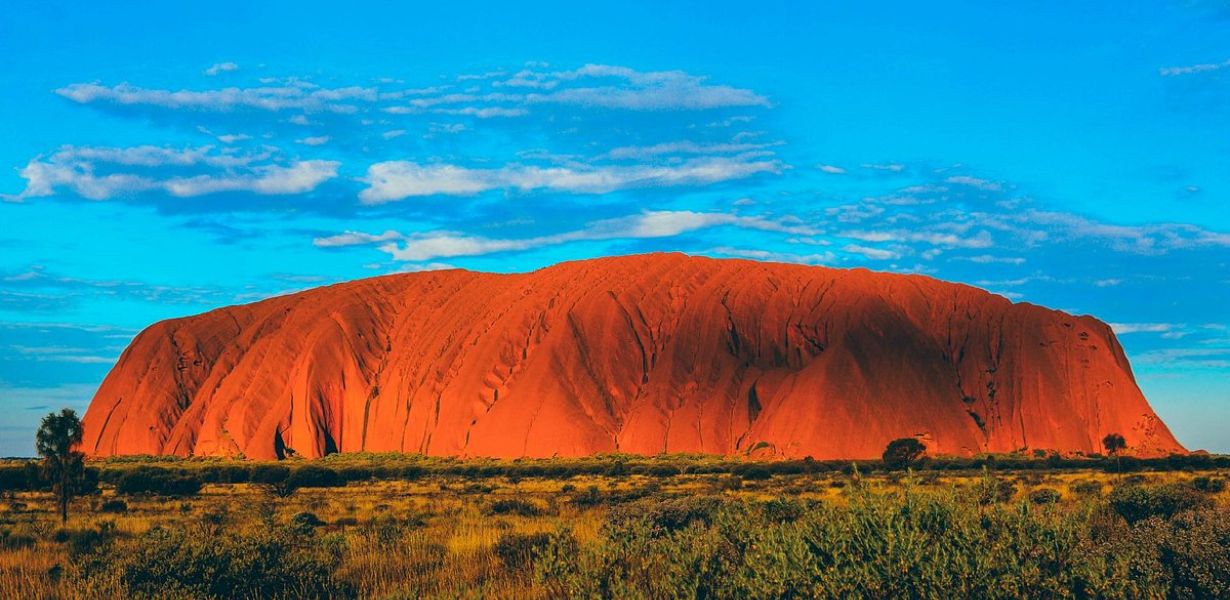
Nestled deep within the heart of Australia’s arid landscapes lies a place of unparalleled beauty and spiritual significance – the Uluru-Kata Tjuta National Park. This vast expanse of desert wilderness is not just a destination; it’s an experience that immerses you in the rich cultural tapestry of the indigenous Anangu people and the breathtaking geological formations that have captivated hearts for centuries. At the convergence of awe-inspiring natural wonders and cultural heritage, this national park stands as a testament to the profound connection between land and people.
How to Get to Uluru: A Pilgrimage Worth Every Mile
Embarking on a journey to Uluru is a pilgrimage in itself. While the park is situated in the heart of Australia, its remoteness only adds to the sense of adventure. Whether you choose to fly or drive, the journey to Uluru-Kata Tjuta National Park is a remarkable voyage through changing landscapes and diverse ecosystems. From bustling cities to the rugged Outback, every mile traversed only enhances the anticipation of reaching this iconic destination.
Uluru Accommodation: Where Desert Luxury Meets Natural Splendor
As you prepare to embark on your journey to Uluru, the question of accommodation naturally arises. Fear not, for the national park offers an array of lodging options that seamlessly blend desert luxury with the rugged beauty of the environment. From eco-friendly resorts that emphasize sustainability to cozy campgrounds that bring you closer to nature, your stay at Uluru-Kata Tjuta National Park is sure to be as memorable as the landscapes that surround you.
Exploring the Heart of Culture: Uluru-Kata Tjuta Cultural Centre
Before setting out to explore the awe-inspiring geological formations that define the park, take the time to immerse yourself in the cultural heritage that makes this place truly unique. The Uluru-Kata Tjuta Cultural Centre serves as a gateway to understanding the traditions, stories, and artistry of the Anangu people. Through vibrant exhibitions, interactive displays, and insightful talks, you’ll gain a deeper appreciation for the spiritual significance that these lands hold for their traditional custodians.
The Majestic Monolith: Uluru’s Enduring Allure
As you stand before Uluru, the sheer magnitude of this monolithic sandstone formation will leave you humbled and awestruck. The changing hues of red and orange as the sun sets and rises lend an ethereal quality to the rock, a sight that has drawn travelers and photographers from around the world. While the climbing of Uluru is respectfully discouraged due to its cultural significance, guided walks around its base offer an opportunity to learn about its geological history, sacred sites, and the delicate ecosystems that call this iconic landmark home.
Kata Tjuta: The Ochre-Hued Spires of Spiritual Significance
While Uluru often takes the spotlight, the nearby Kata Tjuta, also known as the Olgas, boasts its own magnetic charm. This collection of large rock formations, characterized by their distinct red tones and rugged surfaces, holds immense spiritual significance for the Anangu people. Embark on a guided tour through the Walpa Gorge or take in the panoramic views from the Kata Tjuta Dune Viewing Area to fully appreciate the interconnectedness of this ancient land.
Treading Lightly: Conservation Efforts and Sustainable Tourism
Amidst the raw beauty of Uluru-Kata Tjuta National Park lies a commitment to conservation and sustainable tourism. The delicate desert ecosystems and the cultural heritage of the Anangu people are revered and protected through responsible visitor practices. As you traverse the trails and marvel at the natural wonders, remember to tread lightly, carry out what you carry in, and respect the cultural protocols that enrich your experience.
Starlit Stories: Stargazing in the Outback
As the sun sets and the desert landscape transforms into a canvas of darkness, a new spectacle unfolds above. Far from city lights, Uluru-Kata Tjuta National Park offers unparalleled stargazing opportunities. Join guided astronomy tours to learn about the southern constellations, the stories they hold, and the significance of celestial navigation in indigenous culture. The shimmering night sky above this ancient land is a reminder of the timeless connection between humanity and the cosmos.
Flora and Fauna: Adaptation in the Arid
The arid environment of Uluru-Kata Tjuta National Park may seem harsh, but it’s a testament to the resilience and adaptation of life. Desert plants and animals have evolved unique strategies to thrive in this unforgiving landscape. Keep an eye out for red kangaroos, rock wallabies, and an array of bird species as you explore the trails. The native flora, including acacias and spinifex grass, reveal the intricate web of life that sustains itself against the odds.
Final Words
In the heart of Australia’s Red Centre, Uluru-Kata Tjuta National Park beckons with its otherworldly landscapes and deep cultural significance. A journey to this sacred land is not just a trip; it’s an opportunity to connect with nature, history, and the stories that have shaped the land for generations. As you stand before the majestic Uluru and contemplate the tales of the Anangu people, you’ll find yourself forever touched by the timeless beauty and spirituality that define this national park.
Commonly Asked Questions
Q1: How can I reach Uluru-Kata Tjuta National Park?
A: You can access the park by flying into Ayers Rock Airport or driving through the Outback, both routes offering unique perspectives of the Australian landscape.
Q2: What’s the significance of Uluru to the Anangu people?
A: Uluru holds deep cultural and spiritual significance, with stories and traditions that have been passed down through generations of Anangu custodians.
Q3: Can I climb Uluru?
A: Climbing Uluru is discouraged due to its cultural importance. Guided walks around the base offer a respectful way to learn about its history.
Q4: What’s the best time to visit the park?
A: The cooler months from April to September are ideal, offering comfortable temperatures for exploring the park’s wonders.
Q5: Are there accommodation options within the park?
A: Yes, the park offers various accommodations, from resorts to campgrounds, allowing you to choose the experience that suits your preferences and budget.




